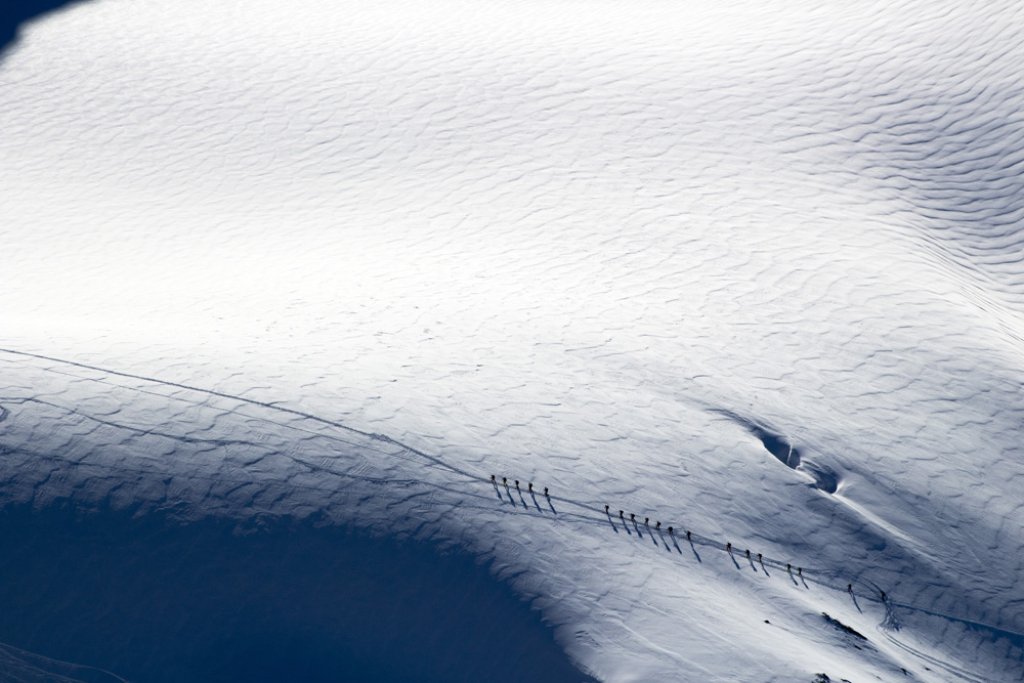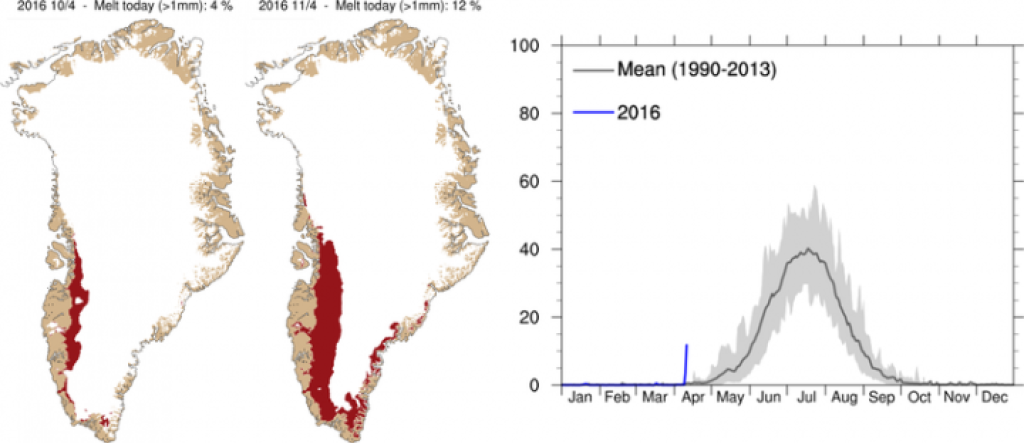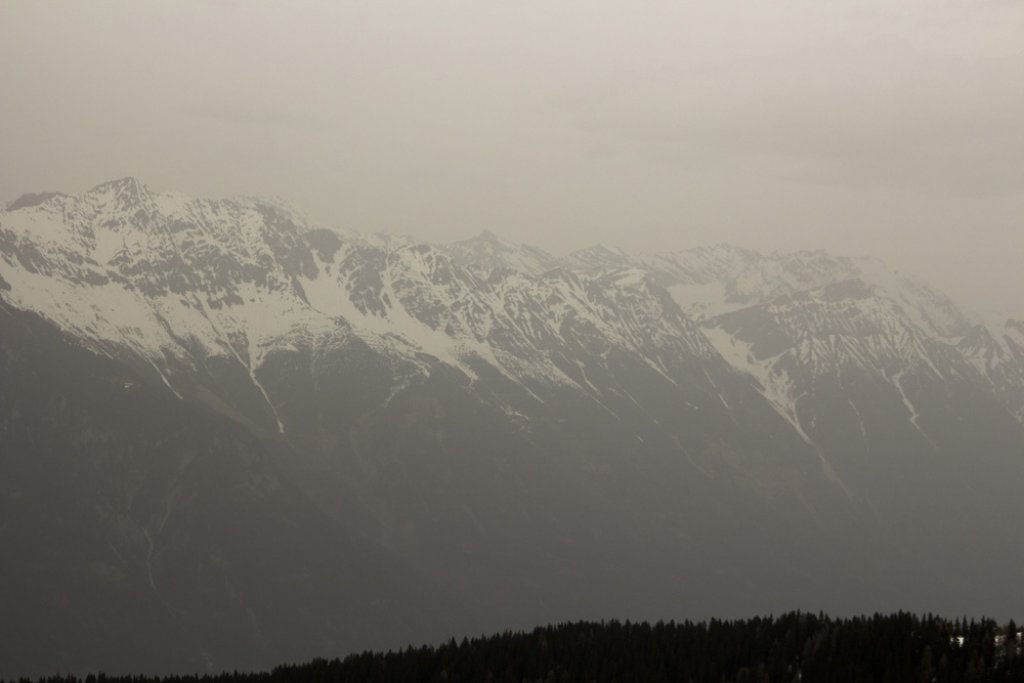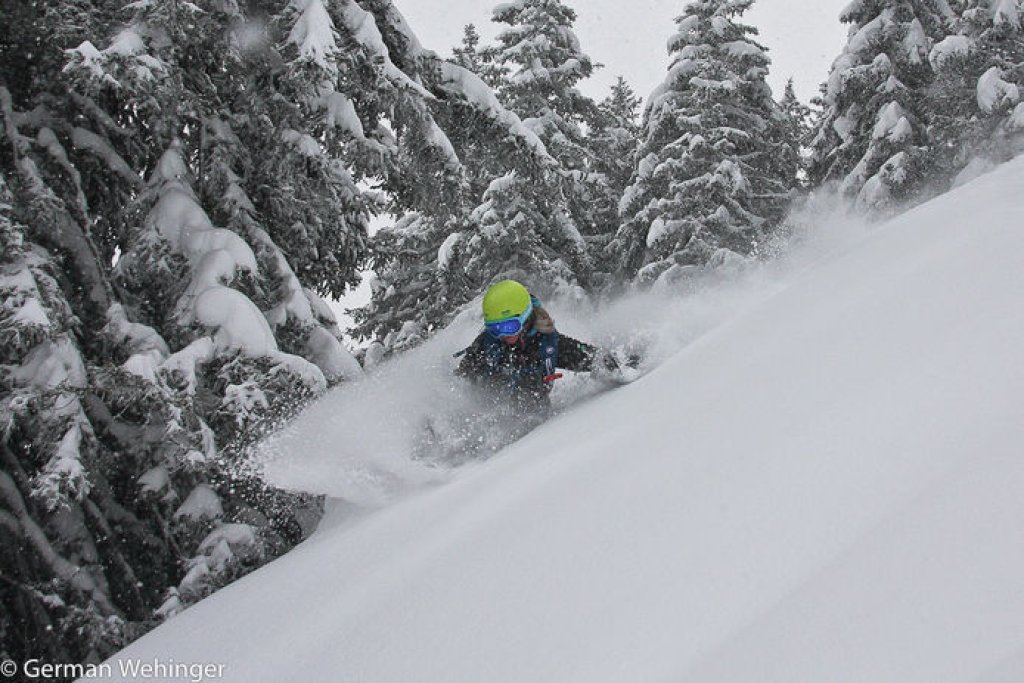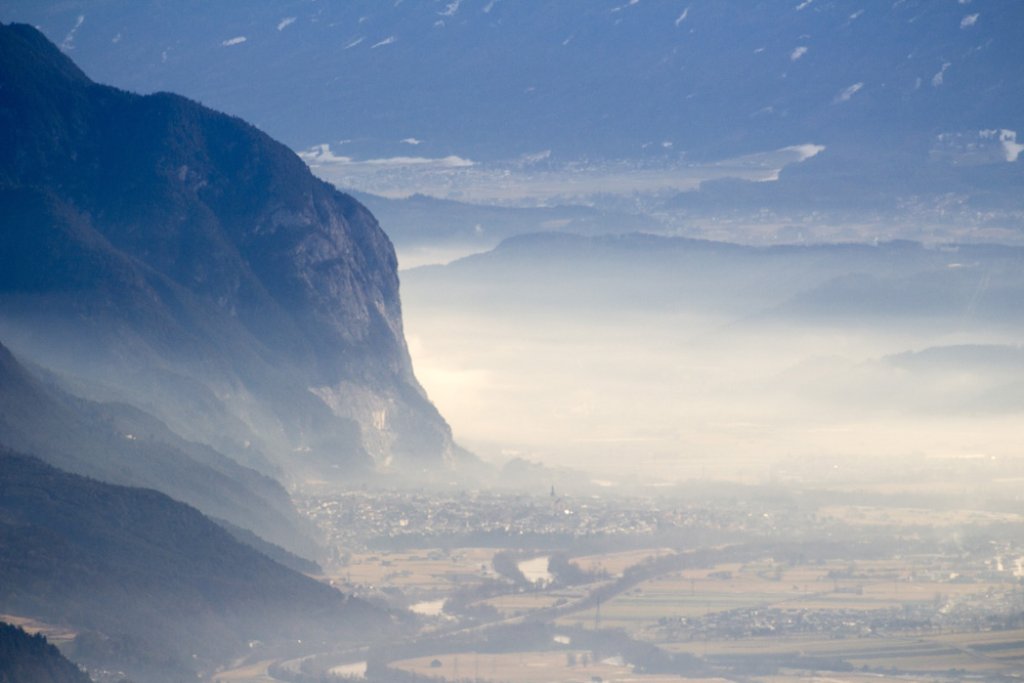Current situation
Characterizing for the general weather situation is a strong undulation of the jet over the Atlantic. While a massive trough has settled over the eastern half of Canada, a high pressure system lies downstream (to the east) of it, reaching as far north as Greenland. Again to the east of this lies an Atlantic trough, and the Alps are in its frontal SW current. The omega-like high in the area of Greenland has been there for some time now and is causing extremely high temperatures far above the usual average values at this time of year. The seasonal melting of the Greenland ice sheet has already begun - on about 12% of the ice sheet (melting has been registered especially in the southwest of the island since this week. Melting usually only begins in earnest towards the end of May.
